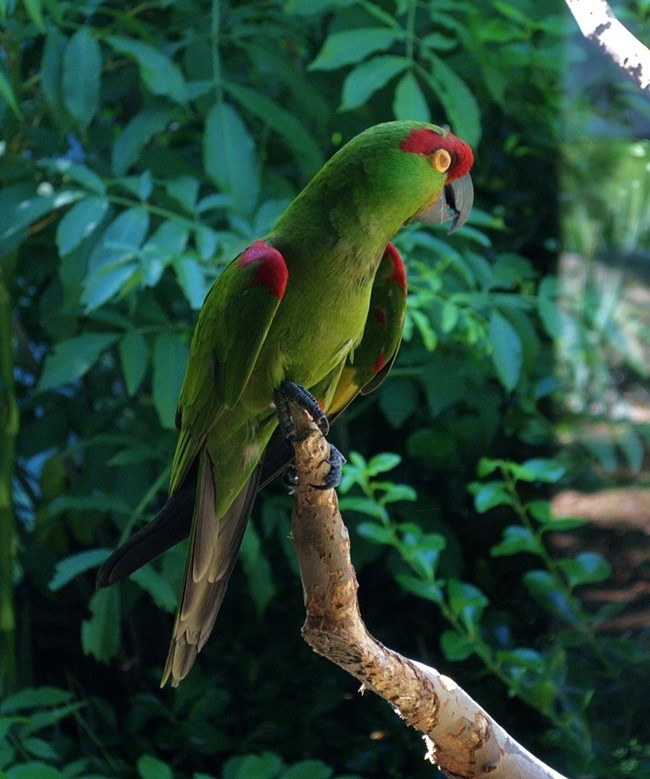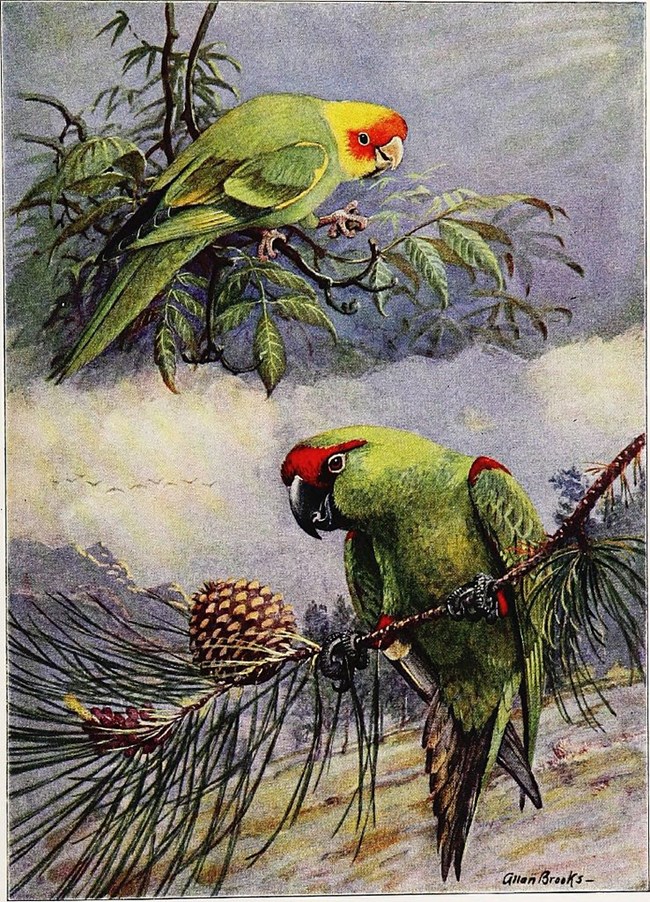
Wiki Commons/Futureman1199 One of two native North American parrots, flocks of Thick-billed Parrots once roamed the Sky Islands of the American Southwest, foraging for pinecone seeds at elevations between 6,000-9,000 feet. This parrot is adapted to cold, snowy winters, and often uses old woodpecker holes to nest. The parrots are noisy, which made them easy for hunters to follow and shoot, usually for food, in the late 1800s and early 1900s. The birds weigh about a pound. 
Public Domain/Allan Brooks While the Carolina Parakeet (the other North American parrot) is now extinct, the Thick-billed Parrot is considered locally extinct (extinct in its US range). Wild populations of Thick-billed Parrots still exist in Mexico, but are threatened by habitat loss (mostly due to logging), illegal pet trade, and climate change (which could limit the range of the pine trees they rely on, as well as increase the chances for devastating fires that could destroy their habitat). The American Bird Conservancy estimates the thick-billed parrot population to be around 2,500 birds, and it is considered endangered by the International Union for Conservation of Nature and Natural Resource (IUNC). The Chiricahua Mountains do have a bird species that was sucessfully reintroduced, though. The Gould's Turkey was hunted close to extinction in the United States, before the Arizona Game and Fish Department and the National Wild Turkey Federation began reintroducing turkeys from Mexico in the early 2000s. |
Last updated: August 1, 2018
